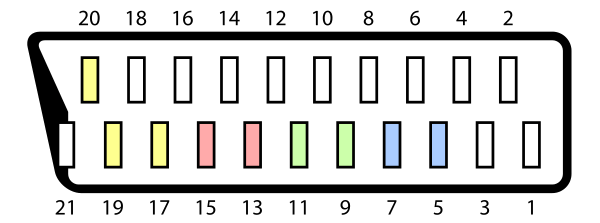We all have boxes of cables for everything we have had in the past, those white red and yellow AV cables, those red green and blue cables, and loads of others besides. Let’s go through and recycle the ones we don’t need.
Sort your cables
Sort your cables into what function they provide, by fitting the connector to the device, you can store it with that cable and save space by recycling any cables you don’t need any more.
Use elastic bands and Velcro ties to bundle up the cables you are keeping and if you are not storing the cable with the devices, label them what function they are for and what device they fit together with the date you sorted it.
If you audit your cable collection in the future, you will easily see when you matched them and can recycle any cables from devices you no longer own.
Old phones and their cables
Go through your old phones and remove old SIM cards and memory cards. Go through your phones and remove contacts and messages.
Once you are happy that your data is removed, you can recycle your mobile phones at the nearest recycling point, which you can find on the Recycle Now website.
A/V Cables
Unless you are using older games consoles, you won’t need to keep the older cables.
You won’t be connecting newer devices using anything other than HDMI these days, so you can get rid of all the other cables, and just keep a couple as spares. I have included the connector types that were commonly used to aid identification.
Guide to connectors - Analogue

Composite video
Composite video uses a single yellow phono connector for the video picture.
Audio is provided by red and white phono connectors.

Component video
Component video uses three distinct colour channels for the video using phono connectors. Audio is provided the same way as Composite video.

S-video
S-video uses 4 pins to provide the video connection. Audio is provided the same way as Composite video.

SCART
SCART is a connector that combines both component video (RGB) and composite video support as well as S-video. It also includes the audio.

VGA
The VGA connector supplies RGB channels with both vertical and horizontal sync pins. Audio is either provided via a 3.5mm connector or red and white phono connectors.
Guide to connectors - Digital

DVI
DVI is actually a system that can use analogue (DVI-A), digital (DVI-D) and integrated (DVI-I) to send the picture. Audio is provided the same as VGA.

HDMI
HDMI is a break from previous connectors as both audio and video are sent digitally through this connector in 3 dedicated channels.
Camera cables
Sort out the cables you use with your cameras and get rid of any cables that don’t fit the camera you use.
Smartphones have much better cameras in them these days, in comparison to compact domestic cameras so you will be better off recycling your old camera and their cables.
Computer cables
Unless you have a specific need to keep older connectors, these can be disposed of.
Since most computer devices are USB these days, you no longer have to work with a soup of different cables.
Match your USB cables with your devices and store them with these devices, then recycle any cables that are extra or don’t match.
Here are some examples of those older cables and connectors:
Serial/Parallel/MIDI
Centronics parallel, serial (RS232) and MIDI/game port.

Keyboard
IBM AT keyboard and IBM PS/2 keyboard and mouse.

Storage
FireWire, IDE, SCSI



